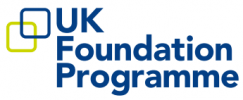Journey of learning and teaching
I was a fresh-eyed fourth-year medical student with my bags packed and my brain filled with a mixture of emotions from excitement to nervous anticipation. Having just transferred from Malaysia to Edinburgh, I was keen to learn how things were done in the UK. I was keen to learn from the doctors and professors driving the NHS forward. As I set foot on the bustling hospital ward, I was met with a whirlwind of experiences – the challenge of understanding thick Scottish accents, the relentless pursuit of mastering NICE guidelines, and the overwhelming pace of ward life. Yet, amidst the chaos, I was welcomed by a team of kind and supportive healthcare professionals who each took the time to teach me in their own ways.
In particular, I still remember my encounter with a SHO who went above and beyond, patiently taking the time after the ward rounds to provide us with bedside teaching. I remember asking him ‘How do you know that this patient had a PE? His ECG just showed sinus tachy?’ – a concept I had struggled to grasp through textbooks alone. Without hesitation, he walked me through the guidelines and scoring systems used to assess and manage such conditions, seamlessly integrating clinical reasoning with patient safety. In that instant, I saw the difference between theoretical knowledge and real-world application—a lesson that has stayed with me ever since.
Fast forward to graduation, I walked through the grand halls of my university – where generations of medical knowledge had been passed down, proudly donning my gown and receiving my scroll. After years of studying, countless all-nighters, and moments of self-doubt, I finally stood before the lecturers whose voices I had played on repeat while revising, the tutors who had spent hours facilitating group sessions. Scanning the crowd, I found my family, smiling both awkwardly and proudly for the cameras, knowing that this was only the beginning of the next chapter.
Now, standing in his shoes as a junior doctor, I often find myself scrambling to recall that very information—frantically searching the intranet for protocols I should already know, navigating the varying practices across different trusts, and juggling the weight of real-life responsibilities. But as time goes on, I’ve begun to find my footing, slowly growing into my role, and no longer feeling like a complete novice.
I realised that the learning had also just begun.
Then came a full-circle moment: during my first week as a junior doctor, a medical student approached me for a sign-off. Instantly, I was transported back to my own student days, much like Dorothy navigating the Land of Oz in search of the great wizard. I remembered chasing down signatures to bring my medical portfolio to life, and now, I was part of that same journey—this time on the other side. Even in the seemingly mundane tasks such as rewriting a Kardex, altering Gentamicin or insulin charts, drafting discharge letters, or reviewing stable patients, there was always an opportunity to teach. Without realizing it, I had stepped into the role of my previous SHO – I had stepped into the role of an educator. I realised I had become a link in the chain of medical knowledge, imparting what I had learned to those following in my footsteps, and helping others along their journeys along the yellow brick road.
As I look back, I am deeply grateful to all the educators who have guided me along the way – those who supervised my first procedures, those who encouraged me to attempt challenging bloods (which, admittedly, only succeeded half the time), and those who calmly helped me assess capacity in particularly aggressive patients while I was very close to pulling my own hair out.
Even though my first FY rotation was in the quaint rural town of Kirkaldy, Scotland, I still found countless teaching opportunities available, many of which were sitting in my emails. Medical education in Fife benefits from a dedicated team that actively organizes teaching sessions and simulation training for students from University of Dundee, St Andrews and Edinburgh. The commitment to structured learning ensures that both students and junior doctors have ample opportunities to develop their skills in a supportive environment. The satisfaction is real when people return to tell me they found my sessions helpful, going so far as to offer me a free coffee in gratitude. At the same time, I continue my own path to find the wizard. I sign up to courses offered by our Foundation Programme, attend weekly teaching sessions involving a wide range of topics, enrol in postgraduate teaching courses, and seek opportunities to develop both clinically and academically. The cycle of learning and teaching never stops in medicine. If you’ve made it this far, consider this a reminder: the teaching you’ve provided – whether formal or informal – has shaped someone’s journey. Just as my seniors guided me, I now hope to do the same for those who come after me, all while continuing to learn from those ahead of me.
Teck Yon Lee
F1, Scotland Foundation School
April 2025
All previous HOFP articles can be found on on our HOFP webpage
